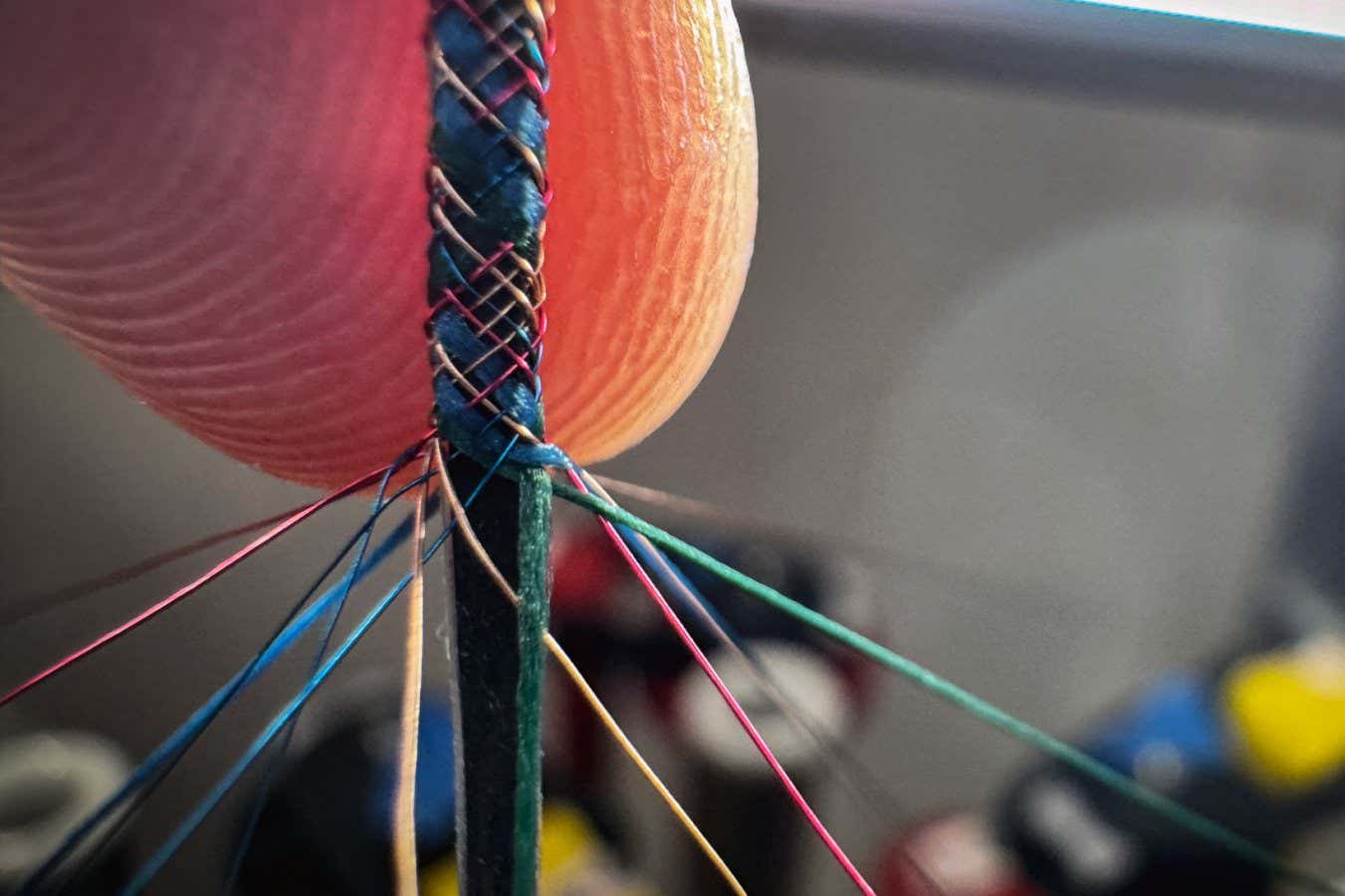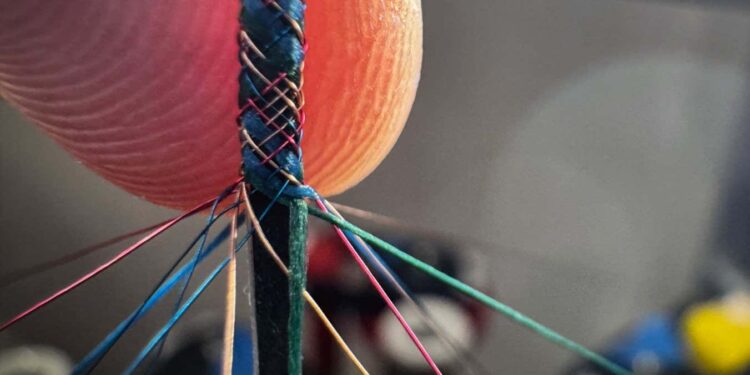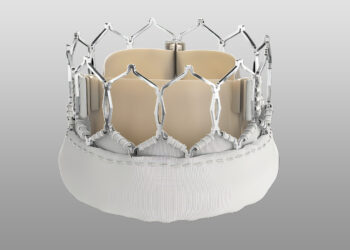[ad_1]

A computer thread being braided with metal and textile yarns to make potential clothing
Hamilton Osoy, IFM
Stretchy computers on threads that can be stitched into clothes could be used to record whole-body data that most medical sensors can’t pick up.
Wearable technologies, such as smartwatches, monitor signals from the body like heart rate or temperature, but typically only from a single spot. This can give an incomplete picture of how the body is functioning.
Now, Yoel Fink at the Massachusetts Institute of Technology and his colleagues have developed a computer that can be stitched into clothes, made from chips that are connected in a thread of copper and elastic fibre.
The thread has 256 kilobytes of on-board memory, around that of a simple calculator, as well as sensors that can detect temperature, heart rate and body movements. It also has Bluetooth so that various threads can communicate.
This means they can collectively gather location-specific data on the body, which could theoretically be used by an artificial intelligence to monitor a person’s health more accurately, says Fink. “We’re getting very close to a point where we could write apps for fabrics and begin to monitor our health and do all kinds of things that a phone, frankly, cannot do.”
To make the individual threads, Fink and his team folded the chips into a 3D structure and connected them in a copper wire. They then wrapped the wire in a protective plastic casing, which was pulled into a thinner tube that can be covered in fabric, such as cotton or the synthetic fibre Kevlar.
To put them to the test, four fibres were stitched into the legs and arms of a person’s clothes. The researchers found they could identify different movements the person made, such as lunges, squats and arm circles.
The team is now testing clothes made with the thread computers in an Arctic expedition, as part of Operation NANOOK, an annual military exercise led by the Canadian Armed Forces. The clothes will record temperatures and data from different parts of the body, which Fink says could one day be useful for protecting people in extreme environments.

The threads are being tested on army personnel during training
US Army Cold Regions Research & Engineering Lab
As well as recording exercise, this could be useful for detecting when a vulnerable person has had a dangerous fall, says Theo Hughes-Riley at Nottingham Trent University, UK.
Not having to wire the sensors together makes the design much simpler than other electronic fabrics, he says. The researchers also demonstrated that the threads can be washed, but they only used water to do so, not detergent. Their durability in everyday use therefore needs to be proven before they are widely adopted, says Hughes-Riley.
Topics:
[ad_2]
Source link : https://www.newscientist.com/article/2470007-thread-based-computer-could-be-knitted-into-clothes-to-monitor-health/?utm_campaign=RSS%7CNSNS&utm_source=NSNS&utm_medium=RSS&utm_content=home
Author :
Publish date : 2025-02-26 16:00:00
Copyright for syndicated content belongs to the linked Source.














